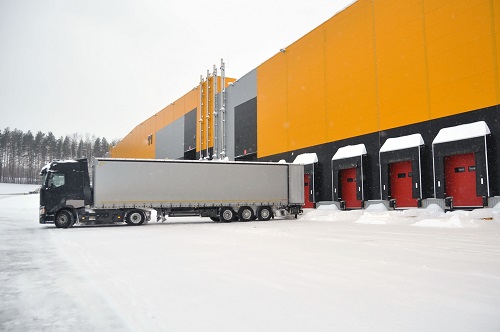Loading docks are hazardous in the winter. Wet, icy conditions can reduce visibility, decrease productivity, damage equipment, and create serious slip-and-fall risks for workers. These tips can help prevent accidents and ensure safe operations.

1 Winterize loading docks and doors.
Gaps in the seals and brushes along the loading dock doors allow cold air, water, and icy buildup inside. These can create slip hazards. Inspect door seals and brushes for damage and replace any worn areas. Install air curtains and high-speed doors to keep out the wind and cold.
2 Review visibility.
Ensure exterior lights at loading zones are visible and working. With shorter daylight hours, your delivery drivers may be arriving before sunrise or after sundown. Snow decreases the visibility of guide lights for your truck. A well-lit area can also prevent slips on the edge of the loading dock, which is the most dangerous area for workers in wet, icy weather.
3 Shovel and clear ice and snow.
Keep the path to the loading dock clear of ice and snow to prevent walking and driving hazards. Shovel the parking lot, ramps, stairs, and sidewalks often. Uncleared sleet and snow can melt and refreeze unless you keep the area clear.
4 Prevent trailer creep.
Trailer creep is when a trailer gets separated from the dock. The separation is caused by motion, usually from a forklift during the loading or unloading of goods. OSHA requires trucks to use wheel chocks. Chocks can slip on wet, icy surfaces or wear out over time. Use wheel-based trailer restraints in addition to chocks to hold the trailer in place.5 Use a loading dock safety gate or guardrails.
Preventing falls on docks is important all year, but ice and winds pose an added threat to warehouse workers. OSHA requires fall protection on any dock that is 48 inches (4 feet) or higher. If the door is open, a visual barrier such as a yellow rope or chain will not suffice. OSHA requires a physical barrier such as a loading dock safety gate or guardrails to keep dock workers safe.
For more information on loading dock safety, download OSHA’s Warehousing: Worker Safety Series publication or contact a DWC Safety Training Instructor at 1-800-252-7031, option 2, or safetytraining@tdi.texas.gov.
